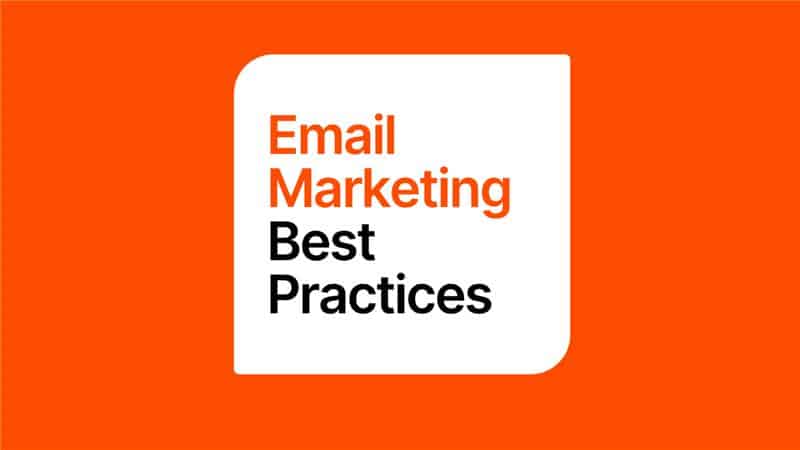
Written by: Benjamin Paine
Managing Director at Digital Nomads HQ
Why trust Digital Nomads HQ?
Digital Nomads HQ is continually recognised as a leading agency & industry "thought-leader" in the digital marketing segment. Known for our expert insight, industry data, and new innovative finding within the Digital Marketing industry. Our agency is frequently cited as a trusted source of credible marketing information, demonstrating the value and impact of our work in shaping industry standards and practices.

PPC Monitoring: Your Guide to Better Ad Performance
97% of potential customers scroll past PPC ads without clicking. This startling statistic reveals the reality of paid advertising, where the average click-through rate sits at a mere 3.17%.
The success rates vary dramatically across sectors. Dating and personal services enjoy higher engagement levels, while tech companies and B2B services struggle to capture attention. With the average cost-per-click reaching AUD 4.95 across industries, every missed click represents lost revenue for your business.
Here’s the good news: proper PPC monitoring holds the key to breaking through these statistics. Think of it as your radar system – constantly tracking metrics, spotting opportunities, and helping you make smarter decisions about your ad spend.
Ready to take control of your PPC performance? This guide walks you through:
- Setting up robust monitoring systems
- Tracking the metrics that matter
- Creating data-backed strategies that boost results
- Turning underperforming campaigns into revenue generators
Let’s help you join the ranks of Australian businesses who’ve mastered PPC monitoring and are seeing real returns on their ad investments.
Setting Up Your PPC Monitoring System
Want your PPC campaigns to deliver better results? The right monitoring system makes all the difference. Let’s walk through the essential components that successful Australian businesses use to track and optimise their paid advertising.
Choosing The Right Tracking Tools
Your PPC success starts with selecting the perfect mix of monitoring tools. While Google Ads remains the cornerstone platform for Australian businesses, additional tools help create a complete monitoring picture:
- Primary Tools: Optmyzr offers comprehensive features for campaign management across Google, Yahoo, and Bing platforms
- Competitor Analysis: Semrush helps you understand what’s working in your market
- Basic Management: Google Ads Editor provides reliable offline campaign control
- Split Testing: AdEspresso enables performance testing across platforms
Set Up Conversion Tracking
Think of conversion tracking as your campaign’s scorecard. Without it, you’re running blind. Here’s your step-by-step setup guide:
- Create a conversion action in your Google Ads account
- Define your conversion categories and values
- Install the Google tag on your website
- Verify the tracking implementation
- Configure conversion settings based on your goals
This tracking system places a temporary cookie when customers click your ad, recording valuable actions through the implemented code snippet.
Create Custom Dashboard
Your dashboard serves as mission control for PPC performance. Smart Australian businesses focus on dashboards that showcase:
- Click-through rates
- Conversion metrics
- Return on ad spend
Pro tip: Build your dashboard around metrics that directly impact your campaign goals. This approach helps you and your clients focus on what truly matters.
Set your dashboards to update hourly – this ensures you’re always working with fresh data. Plus, customise the look to match your brand’s identity for more professional client presentations.
Essential PPC Metrics to Track
Success in PPC advertising comes down to numbers. The right metrics tell you exactly where your campaigns shine and where they need work. Let’s explore the key performance indicators that successful Australian businesses monitor.
Click and Impression Metrics
The average click-through rate on Google Ads search networks sits at 4.40%. Interesting fact: Legal and government sectors lead the pack with 7.45% engagement, while tech companies typically see lower numbers.
The average click-through rate on Google Ads search networks sits at 4.40%. Interesting fact: Legal and government sectors lead the pack with 7.45% engagement, while tech companies typically see lower numbers.
Your impression share reveals untapped potential in your campaigns. Think of it as your market presence indicator – showing where your ads could reach more of your target audience. For display campaigns, viewable impressions track when your ad catches real eyes (more than 50% visible for over one second).
Cost Metrics
Australian businesses face varying cost landscapes across industries. Local data shows Google Ads costs ranging from AUD 54.05 for hospitality businesses to AUD 155.04 in the tech sector.
Worth noting: Longer sales cycles typically mean higher costs per click. The cost per thousand impressions (CPM) offers a different lens for video campaigns, helping you balance reach against budget constraints.
Conversion Metrics
The numbers that really matter: Google Ads users see average conversion rates of:
- 4.40% on search networks
- 0.57% on display networks
Here’s something remarkable: Australian fitness businesses achieve an impressive 14.29% conversion rate on Facebook.
The typical cost per acquisition on Google Ads search networks reaches AUD 85.79. For e-commerce businesses, the golden ratio sits at 4:1 ROAS – every AUD 1.53 spent should generate AUD 6.12 in revenue.
Your Quality Score (1-10) influences both positioning and costs. Google evaluates:
- Expected click-through rate
- Ad relevance to search intent
- Landing page experience quality
Smart Australian businesses track these metrics religiously, using data-driven insights to fine-tune their campaigns for better performance.
Creating an Effective Monitoring Schedule
Your PPC campaigns need constant attention. Just like a well-oiled machine, regular maintenance keeps everything running smoothly. Let’s explore how successful Australian businesses structure their monitoring schedules.
Daily Monitoring Tasks
Think of daily monitoring as your campaign’s health check. Budget pacing stands front and centre – keeping your spend within limits and spotting any concerning spikes.
Your daily checklist should include:
- Fresh campaign elements and approval status
- Budget distribution health checks
- System notifications and disapprovals
- Click and impression tracking
- Search query performance review
Quick action saves money. When keywords consistently miss the mark, swift adjustments prevent your budget from draining away.
Weekly Performance Checks
Weekly reviews paint the bigger picture of your campaign’s journey. These deeper dives help shape your strategic decisions and reveal meaningful patterns in your conversion data.
Smart weekly reviews focus on:
- Projected performance against campaign goals
- Budget reallocation opportunities
- Conversion tracking and optimisation
- Overall campaign effectiveness
Display network performance deserves special attention. Successful Australian businesses regularly weed out poor-performing placements while nurturing the winners. Don’t forget to review site category exclusions – keeping your ads away from unsuitable websites and apps.
Your bid management strategy needs weekly fine-tuning, especially for keywords driving significant daily spend. Watch for keywords that are:
- Converting but stuck in lower positions
- Burning budget without results
- Exceeding your cost per lead targets
Pro tip: Seven-day report analysis reveals whether your daily budgets work effectively. Use these insights to shift resources toward your campaign champions, maximising every advertising dollar spent.
Analysing PPC Performance Data
PPC data tells a story. Your job? Reading between the lines to uncover opportunities that boost your campaign’s performance. Let’s explore how successful Australian businesses turn raw numbers into revenue-generating insights.
Identify Key Trends
Smart analysis starts with smart segmentation. Break down your metrics by campaign, ad group, and keyword level. This granular view reveals what’s truly driving your success.
Your trend analysis checklist:
- Channel performance patterns
- Seasonal peaks and troughs
- Audience behaviour shifts
- Budget efficiency markers
- Quality score movements
Spot Potential Issues
Warning signs appear before problems escalate. Watch for these red flags in your campaigns:
- 75% click drop? Check your feed settings
- 100% sudden increase? Review your display distribution
- 25% higher brand CPC? New competitors might be entering your space
Quality Score issues often show up as poor ratings across click-through rates, ad relevance, or landing page experience. Worth noting: Declining impression share might signal budget constraints or ad rank problems.
Generate Actionable Insights
Turn data into decisions. Australian businesses winning at PPC focus on three key areas:
Root Cause Analysis Find the real source of performance changes. Don’t guess – dig deep into specific campaigns, ad groups, and keywords driving shifts.
Competitor Intelligence Study auction insights to understand where you stand against other advertisers. This knowledge shapes smarter bidding strategies and more compelling ad copy.
Profit Focus Here’s something most miss: A campaign with 1000% ROAS might actually lose money at 75% POAS, while another at 500% ROAS could be more profitable at 150% POAS [34, 35].
Remember, successful PPC monitoring isn’t just about collecting data – it’s about turning those insights into actions that drive real results for your Australian business.
Automating Your PPC Monitoring
Time-consuming PPC tasks stealing your focus? Smart automation helps Australian businesses maintain razor-sharp campaign oversight while freeing up valuable strategy time.
Set up Automated Alerts
Think of automated alerts as your 24/7 campaign watchdog. These digital sentinels keep track of your critical metrics and bark when something needs attention.
Your alert system should watch for:
- Daily conversion rates falling below one
- Budget limits being breached
- Quality Score fluctuations
- Significant CTR changes
Pro tip: While Google Ads offers basic alerts, third-party tools pack more punch for serious monitoring.
The real magic happens when you pair alerts with automated rules. Picture this: your campaign’s click-through rate dips below target – your system automatically adjusts bids or pauses underperforming ads.
Use Automated Reporting Tools
Say goodbye to manual reporting headaches. Modern automation tools slash report creation time from days to minutes.
Leading platforms like Optmyzr offer powerful features:
- Cross-platform reporting across major ad networks
- Real-time data updates
- Seamless team communication via Slack and Teams
Worth noting: Swydo users can update hundreds of reports by tweaking just one master template.
Your automated reporting toolkit should deliver:
- Custom dashboards for different team members
- Scheduled report delivery
- White-label capabilities
- Multi-platform data integration
Here’s something remarkable: Australian digital marketing agencies save 3-7 days monthly through automated reporting. That’s valuable time better spent on strategy and growth.
Remember: While automation handles the heavy lifting, your expertise remains crucial for interpreting results and steering campaign direction.
Taking Action on Monitoring Insights
PPC success demands both quick thinking and long-term vision. Let’s explore how Australian businesses turn monitoring insights into measurable improvements.
Quick Fixes for Common Issues
Think of these as your PPC first aid kit. Quality Score issues often bleed your budget dry, affecting both ad costs and positioning. The good news? Better ad relevance and landing page experience can slash your cost per click by up to 50%.
Your rapid response toolkit:
- Pause those budget-draining keywords with zero conversions
- Block poor-performing search terms with negative keywords
- Push struggling keywords onto page one with bid adjustments
- Boost tracking accuracy by 15% with Enhanced Conversions
- Strengthen conversion coverage through consent mode
Worth noting: Your Asset detail report reveals winners and losers in your ad creative portfolio. Test different combinations of pinned and unpinned content to boost engagement rates.
Long Term Optimisation Strategies
Smart Australian businesses play the long game. Start by consolidating your campaign structure – it’s like giving your smart bidding system a clearer view of the playing field.
Here’s something crucial: Wait for 30 conversions within 30 days before switching on automated bidding. This gives the AI enough data to make smart decisions.
The broad match renaissance is here. Once considered risky, broad match keywords now work brilliantly with smart bidding and proper monitoring. Think of it as casting a wider net with a smarter fishing strategy.
Your testing schedule should include:
- Landing page variations
- Bidding strategy experiments
- Broad match implementations
- Creative ad combinations
Pro tip: Give your experiments six weeks plus one conversion cycle. Focus on the middle four weeks – the sweet spot between learning and proving.
For Performance Max campaigns, think variety. Test multiple asset groups targeting identical products but vary your:
- Asset combinations
- Audience signals
- Landing pages
Location matters for Australian businesses. Analyse your hour-of-week data to fine-tune bid schedules, and adjust geographic targeting based on local performance. Some clever businesses even use weather-based targeting to match their local conditions.
Remember: Your landing pages can make or break your campaign’s success. Think of them as your digital shopfront – they need regular maintenance and updates to keep converting visitors into customers.
Conclusion
PPC success isn’t about beating the 3.17% click-through average. It’s about building a monitoring system that consistently delivers results for your Australian business.
The recipe for PPC excellence? Start with precise tracking tools, add disciplined monitoring schedules, and mix in thorough performance analysis. This data-driven approach spots opportunities that gut instinct might miss.
Smart Australian businesses know:
- Automated alerts catch issues before they become problems
- Regular reporting reveals patterns in your performance
- Swift action turns insights into revenue
Think of PPC monitoring as your business’s radar system – constantly scanning for opportunities and threats. The most successful Australian campaigns combine careful observation with decisive action.
Your next steps? Keep testing. Keep measuring. Keep refining. Your PPC campaigns will grow stronger with every adjustment you make, helping your business capture more of the digital market share you deserve.
Frequently Asked Questions
How can I improve the performance of my PPC ads?
To enhance your PPC ad performance, regularly update your keyword list, improve website performance, use ad extensions, develop a remarketing strategy, and conduct A/B testing. Additionally, ensure your website is secure and accessible, create localised landing pages, and capitalise on FOMO (fear of missing out) in your ad copy.
What are the essential metrics to monitor in a PPC campaign?
Key metrics to track include click-through rate (CTR), conversion rate, cost per conversion, quality score, and cost per click (CPC). Also, monitor page visits, time on site, and site visitor information to gain a comprehensive understanding of your campaign’s performance.
How often should I analyse my PPC campaign performance?
Conduct daily checks for critical aspects like budget pacing and new campaign elements. Perform more comprehensive weekly reviews to analyse conversion metrics and overall campaign effectiveness. Additionally, carry out a thorough monthly performance review to assess long-term trends and strategise accordingly.
What role does automation play in PPC monitoring?
Automation streamlines PPC monitoring by setting up alerts for performance changes, automating routine reporting tasks, and triggering specific actions based on predefined conditions. This allows marketers to focus on strategy while maintaining comprehensive oversight of their campaigns.
How can I optimise my PPC campaign for long-term success?
For long-term optimisation, consolidate your campaign structure, implement smart bidding strategies once you have sufficient conversion data, experiment with broad match keywords combined with automated bidding, and conduct regular A/B tests. Also, focus on improving landing page experience and adjusting budgets based on performance data.

"Inside the agency" A Digital marketing podcast
Tune in to our weekly Youtube and Podcasts discussing industry changes, news & hot topics across all digital marketing channels.







